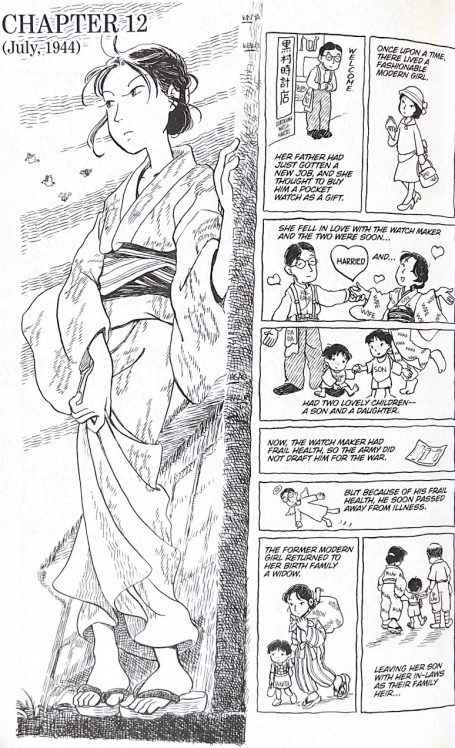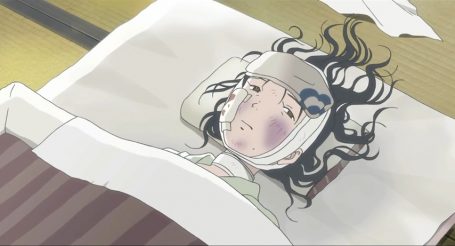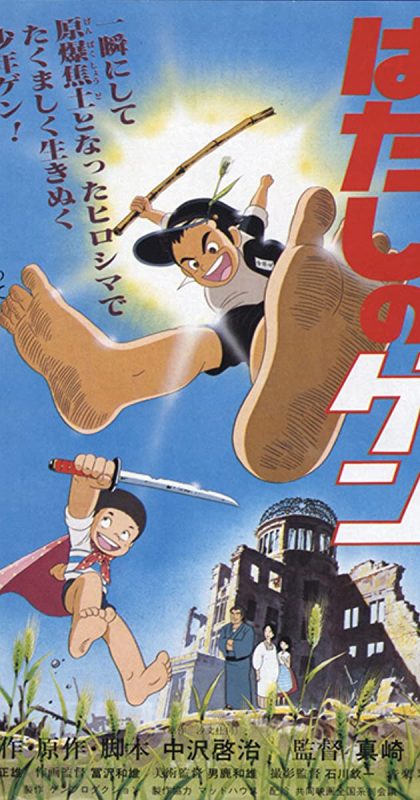By: Neva Nowak
This Friday, our class discussion centered on the manga In this Corner of the World, written and illustrated by Kouno Fumiyo, and the corresponding film. The manga is a rich, complex piece about a young woman coming of age and persevering in and near Hiroshima during the Second World War. Of the stories we have examined in class, this is the first that features a female main character. As the protagonist, Suzu navigates an arranged marriage, moves to a new town, and sustains her new family during times of war. I feel it would have been easy for the story to become a common one of female struggle and oppression. However, In this Corner of the World never stooped to the level of simplistic or stereotypical. Instead, it remained, always, a story about resilience, loss, and life through a female lens.

Even secondary female characters in “In this Corner of the World” receive development. Though Suzu’s sister-in-law is originally characterized as cold and nagging, here we learn about the hardships of her past.
The film version of In this Corner of the World remained faithful to the art of the manga, and at more than two hours in length, the movie incorporated quite a lot of the original story’s content. Therefore, our discussion dealt much more with the common content of the film and manga rather than what was gained or lost in the process of adapting the story for the screen. One of the points I found most interesting in our discussion was the idea of “survivor’s guilt,” originally brought up by Lela, that Suzu may or may not have felt in the aftermath of various traumatic events that happened in the story. For example (spoilers ahead, be warned), Suzu’s niece, Harumi is killed in a delayed bomb explosion that also destroys Suzu’s right hand. It is clear from Suzu’s tearful apologies to Harumi and her mother that she feels deep remorse. Coupled with the loss of her hand — another devastating blow, given Suzu’s love of drawing — Suzu remarks that she doesn’t know what there is left to be glad about. However, when the atomic bomb is dropped in her hometown of Hiroshima (where Suzu had, until the last minute, planned to return), leading to the eventual deaths of her parents and the illness of her sister, so little time is left in the story to explore the effects these events had on Suzu’s psyche that many of us agreed it left us wanting more. Professor Uchiyama suggested that perhaps this choice to leave this topic unexplored is an intentional choice of the author’s and that many things may be said about the topic of grief by leaving some things unsaid. I do agree. However, I can’t shake the feeling of longing for further insight — which is, perhaps, the mark of a successful story.

Here, in the aftermath of her injury, Suzu reflects on Harumi’s death and the loss of her hand.
Friday’s class also included a quick check-in about the status of our research projects, the proposals for which were also due Friday night. Though my research partner, Lupe, and I originally intended to focus on the topics of modernism and nationalism present in postwar film and photography, our in-class examination of various animated film/text sets (including Grave of the Fireflies, Barefoot Gen, and of course In this Corner of the World) inspired us to shift our focus to the topic of animated and live-action versions of postwar texts. In our proposal, we detailed a plan to compare the 1988 animated Grave of the Fireflies to the 2005 live-action Grave of the Fireflies and the original short story by Nosaka Akiyuki. In this project, we will ask: to what extent do the live-action and animated versions of Grave of the Fireflies change or preserve the intimate details of personal memory present in Nosaka Akiyuki’s short story, and how do these films transform this memory into new cultural entities that shape generational memory of war?


